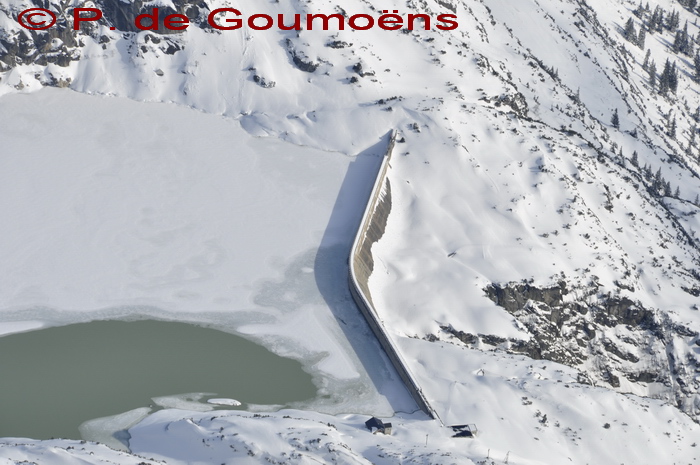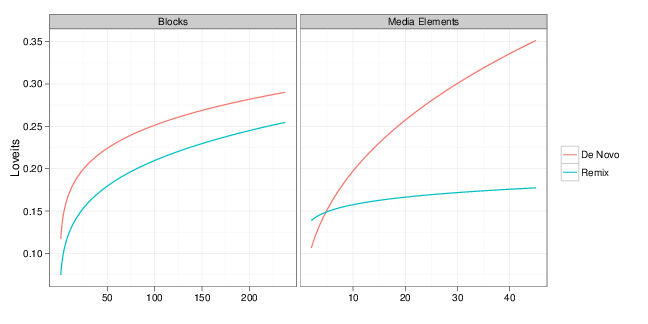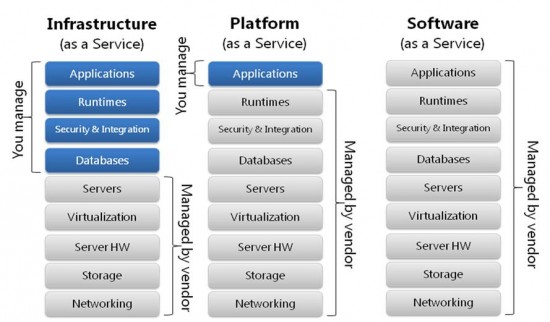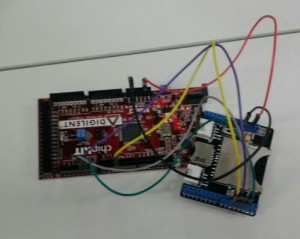
[ once again, I am translating somebody else's material In this case, my good Costa Rican friend
Carolina Flores. Please excuse my stylistic mistakes My English is far from native as you well know. But this material is worth sharing, and worth investing some tens of minutes doing a quick translation. If you can read Spanish, go read Caro's original entry ]
 Have you been to a music record store lately?
Have you been to a music record store lately?
I did so last Saturday, as a mere excercise. I was not planning on buying anything but I wanted to monitor things and confirm my suspicions.
What was I suspicious of? First, that I would only find old records. And so it was: The only recent record I found was
...little broken hearts by Norah Jones. the second, that I would only find music for over 50 year old people. so it was: Were I there to look for a present for my father, I would have walked out with 10 good records. Third, that in the store nothing worth commenting would happen. About that last point, I should point out it was around 10 AM and the store had just opened its doors. Lets concede the benefit of doubt.
I don't think many of you will remember, but in Barrio La California (where there is now a beauty parlour, almost in front of AM.PM) there was Auco Disco. In Auco Disco there was a guy specialized in rock (Mauricio Alice) and another one specialized in jazz (I don't remember his name). In that record you could always find rare records, but if they were not there, at least you were sure to find somebody to say:
"No, we don't have that, but that's an excellent record, it's the best that [insert group here] have ever recorded because just afterwards they switched their guitar player, they had gone a bit south but with that record they are flying. But no, we don't have it; I can recommend you this record by [insert another group] because it has a guitar solo in track six that is amazing".
It would happen more or less like that, which means, one would arrive to Auco Disco at 10 AM and leave around 5 PM with three new records, after having listened to a spectacular music selection. What happened to those stores? Were they killed by The Pirate Bay? That's the simplistic answer from the recording industry! The answer is that those stores never got anything from the industry but an invoice. The industry specially in prescindible markets such as ours was limited to hiring artists, taking care of them recording a sellable product, producing the object called record, and that's it. The more commercial radio stations were paid to program those songs as it cannot be casual that "Mosa, mosa" is the summer hit in all of Latin America, can it? but, record stores? Nothing.
Lets carry on with that idea: Radio stations are paid to program said music. This idea should not lead us to believe that recording companies are to blame for bad taste. I won't reveal my sources, but I know the success of the "Locura autom tica" song by La Secta was a real example. Nobody paid for it. That song got to the number one because of its own merits(?) (you don't know the effort it took to find that thing,
I cannot recommend it to you). Same thing happens with other stations that don't program reggaet n, that try to save the species, and where they play what we do like. But the thing is, everything we like is not available in any record store in this country. Then, even if we wanted to buy a record or give it as a gift to somebody, it is plain impossible. And don't tell me it's the same to present as a gift a link or a CD full of downloaded MP3 as it is to give a record with cover and booklet, wrapped in gift paper.
I might be old-school, but the
fetish object record still exists, not only because of its cover, but because of its sound. A 3MB MP3 is akin to drinking coffee dripping from a bag that has been used eight times with the same coffee beans.
That format is the worst that has ever happened to music, and if we had any bit dignity we would never purchase digital files in Amazon or iTunes safe for MP3 with an acceptable compression level. That, if we could buy them, because not only that is allowed to us. As the musical industry has no interest in resolving ITS problem (that is not our problem, it is those companies') it has not even been resolved how to charge for a MP3 download that includes import fees (well, if downloading from here a MP3 from a USA-based file server can be considered importing goods into Costa Rica!!!) so we don't have to get dizzy entering into the nineties to
Titi Online to discover there is nothing by Muse, Andrew Bird, The Killers, Death Cab for Cutie, Paramore, Bj rk... (believe me, I looked them all up, even Norah jones and La Secta. They also were not there).
This all leads me to the question, which I present with all due respect (NOT):
What the fuck do they expect us to do??? It is outrageous; above all because in the best case they will sell us a watery coffee download that won't allow us to get all the details a vinyl or less compression would give us. In the worst case, post-MP3 groups will end up recording music with no harmonics or hidden sounds, because, what for? Nobody will hear it. They even admit it:
"Some musicians and audio engineers say the MP3 format is changing the way studios mix their recordings. They say the MP3 format "flattens" dynamics differences in tone and volume in a song. As a result, a great deal of new music sounds very much alike, and there is nothing as focusing to create a dynamic listening experience. Why working so hard in creating complex sound if nobody can detect it?" (Rolling Stone, The Death of High fidelity, December 26 2007, taken from
here).
That's why I am not surprised by
Adri n's post regarding the sales of old records. The price has nothing to do with it. The causes are related to the fetish object record and what it means or does not mean for people that have never purchased one. Adri n also asks if somebody here keeps buying records. I answered that I would if the stores sold anything I like. I do it even after the nausea I feel while reading "
This phonogram is an intellectual work protected in favor of its producer COPYING IT IN WHOLE OR PARTIALLY IS FORBIDDEN " (like that, uppercased, yelling to whoever is only guilty of having bought a record and defending the producer, not the artist). But I am sure that almost nobody buys records because doing so is no longer a gratifying experience; because if buying a record is clicking to wait 15 days for it to reach the mailbox, we prefer clicking on the download link.
But there is another reason for people not to buy records anymore. In one of my talks regarding
the dictatorship of the all rights reserved, I asked the 30 twenty-something-year-old students if any of them had ever bought a record. One answered he had, because he is an author and performer (
cantautor in Spanish) and understands the effort that producing a record entails. The rest of them had never done so. Is it possible that said young people have never listened to real music? Is it possible that, were it not for concerts, what they consider music is a set of washed-out MP3 that are about to fill up 1TB of their computer? Does people no longer buy records because they cannot differentiate one sound from the other?
It is not very clear for me where do I want to get to. The recording industry is despicable. An industry that instead of innovating sets its energy on suing adolescents for downloading songs, trying to pass laws restricting our freedoms in Internet, putting up DRMs making us hostages to our devices* and forcing us to listen just the aroma of music, deserves my whole contempt. If we add ot this that said industry won't allow us to legally download their breadcrumbs because it has not understood that Internet does not need a van crossing borders, besides my contempt they deserve my pity and my heartfelt condolence.
But the condolence is also for music, real music, that which is not compressed under the shoe using a terrible format. It is also for independent musicians that have not realized that begging for a bit of space to that industry they just add to themselves the "despicable" tag, given they deserve the fruits of their work to enter their bank account.
However, there are good things that have come out of this absurdity. Be it for those that have joined projects such as
Aut mata (even if it is in MP3) and for dreams come true such as
Musopen (that have achieved that the music that's in theory Public Domain becomes so in practice as well). Good for the Electronic Frontier Foundation and the
list of lawyers willing to defend people accused of ilegally downloading music in the USA. Good for the
Creative Commons licenses that allow free sharing.
All those are growing solutions, although none of them allows me to buy the Panamanian
Carlos M ndez's record. Thankfully, a friend of mine who knows I will never give a dime to Apple, bought the files for me in iTunes. I thank him deeply, although I would have prefered to go to Auco Disco and have Mauricio tell me that the 2007 EP I have from Carlos is better than the record he did on 2009.
* My devices don't have DRM because I use free software. I also use the
ogg file format.
Image by
verbeeldingskr8


 Getting there from DebConf13 and the Debian 20th birthday
For those coming to Switzerland for DebConf13 next month, the Gelmerbahn is probably a little bit too far for a day trip but makes an excellent place to stop during a 2 or 3 day tour around Switzerland. It is accessible using the all-day bus pass for the tour of 3 or 4 mountain passes or by train to Innertkirchen and then a short ride on the bus. The busses are irregular, use sbb.ch to plan the journey. Walking down the mountain from the lake to the bus stop takes about 90 minutes and for those who choose this option, the ticket is cheaper.
More Swiss travel blogs
Please click here to access some of my previous blogs about Swiss travel with videos and useful ideas for day trips.
Getting there from DebConf13 and the Debian 20th birthday
For those coming to Switzerland for DebConf13 next month, the Gelmerbahn is probably a little bit too far for a day trip but makes an excellent place to stop during a 2 or 3 day tour around Switzerland. It is accessible using the all-day bus pass for the tour of 3 or 4 mountain passes or by train to Innertkirchen and then a short ride on the bus. The busses are irregular, use sbb.ch to plan the journey. Walking down the mountain from the lake to the bus stop takes about 90 minutes and for those who choose this option, the ticket is cheaper.
More Swiss travel blogs
Please click here to access some of my previous blogs about Swiss travel with videos and useful ideas for day trips.



 Have you ever heard someone talking extensively about Cloud Computing or generally Clouds? and have you ever noticed the fact many people (even the ones who present themselves as experts) don t really understand what a Cloud is at all? That happened to me multiple times and one of the most common misunderstandings is many see the Cloud as something being on the internet. Many companies add a little logo representing a cloud on their frontpage and without a single change on their infrastructure (but surely with a price increment) they start calling their products as being on the Cloud. Given the lack of knowledge about this specific topic people tend to buy the product presented as being on the Cloud without understanding what they really bought.
Have you ever heard someone talking extensively about Cloud Computing or generally Clouds? and have you ever noticed the fact many people (even the ones who present themselves as experts) don t really understand what a Cloud is at all? That happened to me multiple times and one of the most common misunderstandings is many see the Cloud as something being on the internet. Many companies add a little logo representing a cloud on their frontpage and without a single change on their infrastructure (but surely with a price increment) they start calling their products as being on the Cloud. Given the lack of knowledge about this specific topic people tend to buy the product presented as being on the Cloud without understanding what they really bought.
 But what Cloud Computing really means? it took several years and more than fifteen drafts to the National Institute of Standards and Technology s (NIST) to find a definition. The final accepted proposal:
But what Cloud Computing really means? it took several years and more than fifteen drafts to the National Institute of Standards and Technology s (NIST) to find a definition. The final accepted proposal:

 Some of my Romanian readers might know that for the last two years I've got involved in the skeptical movement to such a degree that I am a co-producer of a bi-weekly podcast on science and skepticism (in Romanian) called
Some of my Romanian readers might know that for the last two years I've got involved in the skeptical movement to such a degree that I am a co-producer of a bi-weekly podcast on science and skepticism (in Romanian) called 
 [ once again, I am translating somebody else's material In this case, my good Costa Rican friend
[ once again, I am translating somebody else's material In this case, my good Costa Rican friend 

 I've been wanting to sponsor a child in Africa for many, many years. I
remember seeing a photo of a sponsored child on a couple of sets of friends'
mantelpieces in Canberra, and saying to myself how I should really do that
too.
Of course, for no really good reason, fast-forwarding to 6+ years later, I
still hadn't gotten around to it. Until last month. I was walking out
of the Apple Store in Palo Alto. I was accosted by one of those people on
the street, with the clipboard and all that.
I usually manage to brush these sorts of people off. I really hate solicited
donations. I'd rather consciously make a donation to a charity, than do it
because someone on the street was paid to ask me to, or knocked on my door,
or whatever. But I was distracted, or in a good mood, or something, and so I
missed the initial opportunity to deflect her.
I'm really glad I did, because as I said, this is something that I've wanted
to do for years, so I barely hesitated, and signed up on the spot.
I received the welcome kit in the mail a couple of days ago. I've been
allocated a 6 year old boy named Armando, from Mozambique. I'm looking
forward to corresponding with him.
Our friends, and former neighbours, the Harvetts have moved back to South
Africa, and I hope one day to be able to visit them. Since we'll be in the
vicinity, I hope one day to be able to visit Armando as well.
I'm pleased to see that
I've been wanting to sponsor a child in Africa for many, many years. I
remember seeing a photo of a sponsored child on a couple of sets of friends'
mantelpieces in Canberra, and saying to myself how I should really do that
too.
Of course, for no really good reason, fast-forwarding to 6+ years later, I
still hadn't gotten around to it. Until last month. I was walking out
of the Apple Store in Palo Alto. I was accosted by one of those people on
the street, with the clipboard and all that.
I usually manage to brush these sorts of people off. I really hate solicited
donations. I'd rather consciously make a donation to a charity, than do it
because someone on the street was paid to ask me to, or knocked on my door,
or whatever. But I was distracted, or in a good mood, or something, and so I
missed the initial opportunity to deflect her.
I'm really glad I did, because as I said, this is something that I've wanted
to do for years, so I barely hesitated, and signed up on the spot.
I received the welcome kit in the mail a couple of days ago. I've been
allocated a 6 year old boy named Armando, from Mozambique. I'm looking
forward to corresponding with him.
Our friends, and former neighbours, the Harvetts have moved back to South
Africa, and I hope one day to be able to visit them. Since we'll be in the
vicinity, I hope one day to be able to visit Armando as well.
I'm pleased to see that 


 I just received a strange call. Basically, someone phoned me up and tried to convince me to change my computer s settings. They called my direct line (not the co-op switchboard), so I think they might be calling other numbers in the Weston-super-Mare area. Watch out for this attack.
I d heard about these calls from
I just received a strange call. Basically, someone phoned me up and tried to convince me to change my computer s settings. They called my direct line (not the co-op switchboard), so I think they might be calling other numbers in the Weston-super-Mare area. Watch out for this attack.
I d heard about these calls from  On the drive back home from BelHac I thought about the configuration problem in Haskell: The issue is finding a convenient way to work with values that are initialized once and used in many places all over the code.
Assume you have a large module of pure code that, using many custom functions and combinators, parses some data structure. Later you noticed that somewhere far down in the parser, you need to react differently depending on some user preferences say, his preferred language. The usual solution is to add a new parameter to that function and, in consequence, to each and every function that calls or might call directly or indirectly this function. This is often very inconvenient.
Other solutions include:
On the drive back home from BelHac I thought about the configuration problem in Haskell: The issue is finding a convenient way to work with values that are initialized once and used in many places all over the code.
Assume you have a large module of pure code that, using many custom functions and combinators, parses some data structure. Later you noticed that somewhere far down in the parser, you need to react differently depending on some user preferences say, his preferred language. The usual solution is to add a new parameter to that function and, in consequence, to each and every function that calls or might call directly or indirectly this function. This is often very inconvenient.
Other solutions include:
 So I got a
So I got a  I'm back in town. After approximatly 4 full days of use, the first battery
bank dropped to 9 volts, my cutoff point for safe use. Which turned
out to be below the safe use point of my laptop power adapter, which burnt
out while I was busy listening to music and adding power-saving caching
stuff to my mpd setup. Irony not appreciated, world.
I decided to come back while the other bank is still relatively full.
I'm back in town. After approximatly 4 full days of use, the first battery
bank dropped to 9 volts, my cutoff point for safe use. Which turned
out to be below the safe use point of my laptop power adapter, which burnt
out while I was busy listening to music and adding power-saving caching
stuff to my mpd setup. Irony not appreciated, world.
I decided to come back while the other bank is still relatively full.
